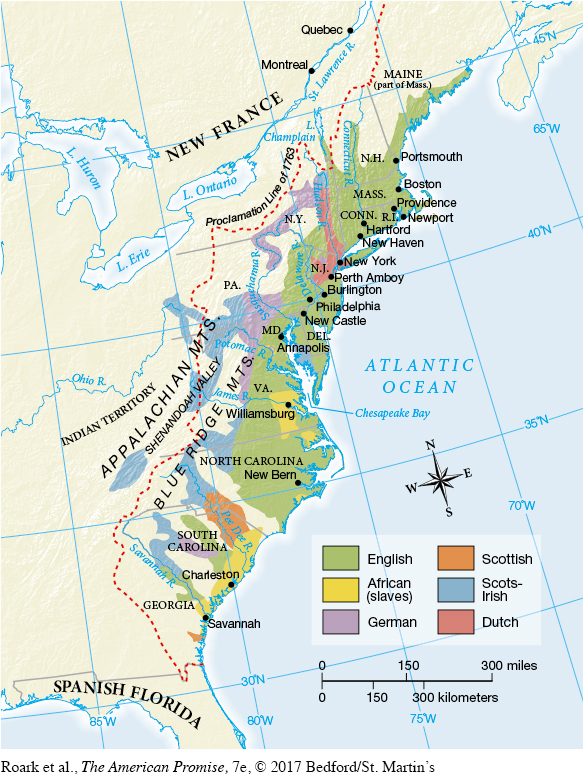The American Promise: Printed Page 107
The American Promise, Value Edition: Printed Page 99
The American Promise: A Concise History: Printed Page 114
A Growing Population and Expanding Economy in British North America
The most important fact about eighteenth-
The American Promise: Printed Page 107
The American Promise, Value Edition: Printed Page 99
The American Promise: A Concise History: Printed Page 114
Page 108In general, the growth and diversity of the eighteenth-

The booming population of the colonies hints at a second major feature of eighteenth-
REVIEW How did the North American colonies achieve the remarkable population growth of the eighteenth century?